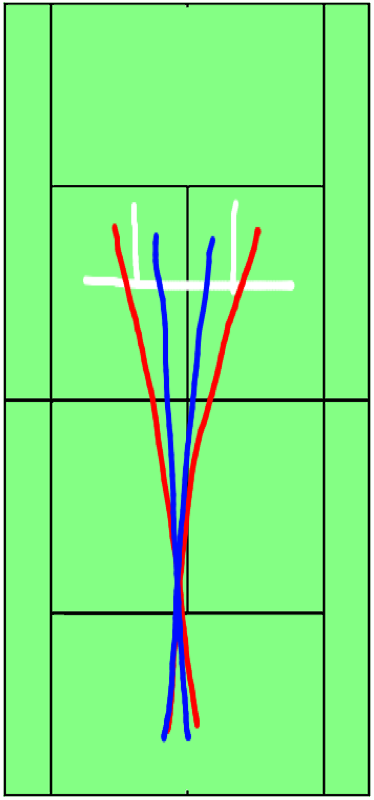Serve and Volley Play
Monday, October 31, 2011 at 12:48PM
CAtennis in Creative Practice, Games, Training, Transition, Volleys
ANTONY: "These many then shall die, their names are prick'd" (Modern Translation: These many men then shall die; their names are checked on the list). Julius Caesar (ACT IV; Scene 1) by William Shakespeare. In this scene, Antony, Octavius and Lepidus have banded together in a counter-conspiracy to destroy the men who killed Caesar. The men pick certain people who must die, including the brother of Lepidus. They are sacrificing even their loved ones in order to achieve their desired goals.
Great! What does this have to do with tennis and, specifically, the Serve and Volley Play?! When embarking on a serve and volley gamestyle you have to completely change your attitude towards tennis. For example, where winners and "forced" erros are rare in a baseline-to-baseline exchange, they are far more prevalent when one of the players is at the net. In other words, you don't get many second chances to scramble when you're at the net. As a serve-and-volleyer (or attacking player) you are simply going to have to become accustomed to seeing balls go by you, having the opponent force some errors from you and, perhaps, even hitting you. However, you have to believe that simply by being at the net, the percentages will slip in your favor thereby putting you in a better position to win the match. Even if you're 51%-49%, that's still sufficient room for you to win the match. Serve-and-volleying is about taking time away from your opponent and elciting more errors from the opponent than passing shots or shots that force errors on your behalf. Therefore, keep coming in for as long as you are winning more points than you're losing. The missed volleyes and half-volleyes as well as your opponent's passing shots should "slide off" you as water on teflon. Don't let lost points get to you. Unfortunately, a lot of juniors see balls going by them once or twice and, thereafter, refrain from coming in altogether because they're thinking that they are doing something wrong. Initially, that may be the case but with more practice you will be much better at "reading" the opponent's shots. For example, you will notice how certain grips, footwork, balance and preparation results in certain shots. Then, next time you see these movements, you will be in a better position to anticipate. You will also be better at placing your serves, mixing them up as well as navigating the mid-court transition area. These are things that will help you with the rest of your game even if you remain, for the most part, a baseliner.
The only real way to become good at attacking is by doing it repeatedely. No, one workout a month is simply not good enough. If you want to improve this dimension of your game you (as a 14+ year old player) are going to have to set aside 6-8 weeks of serious serve-and-volley development. Work on volleys, swinging volleys, pick-up shots, stab volleys, reflex volleys, volley-overhead combination, chip-and-charge plays, etc. all with the mindset of being aggressive. If you're "in season", try to use the S-and-V strategy in earlier rounds against weaker opponents. Alternatively, seek to play smaller tournaments so that you get to use this play in more matches. The goal is not to become a serve-and-volley player (although there's nothing wrong with that if it's in your heart) but to simply become an expert at this play. Then, you can still play your "game" but you can use the attacking play once or twice a game (more/less) to mix things up.
In this regard, I recommend playing a lot of practice points where all you do is serve and volley. Divide the receiver's service box into two halves and practice playing points (up to 11, 15 and 21) where you serve only in one of these halves. Then, change it up and serve in the other half. When you become good at picking up on the opponent's returns, leave the court-dividers but serve anywhere. The goal is to start seeing HOW your opponent RESPONDS based on the placement/spin/pace of your serve. Remember, humans are pattern-creatures. We tend to do what's comfortable when faced with a situation that's even slightly out of the ordinary. By repeating these points, you will become more adept at discerning the opponent's return patterns and movement. Again, it's practice so don't get discouraged at seeing returns go by you. Go forward like "the Russians to Berlin" (i.e., forget about the sigh-seeing). Break some eggs and sacrifice some "loved ones" so that you can achieve greatness down the road.

Article originally appeared on Home (http://catennis.squarespace.com/).
See website for complete article licensing information.
